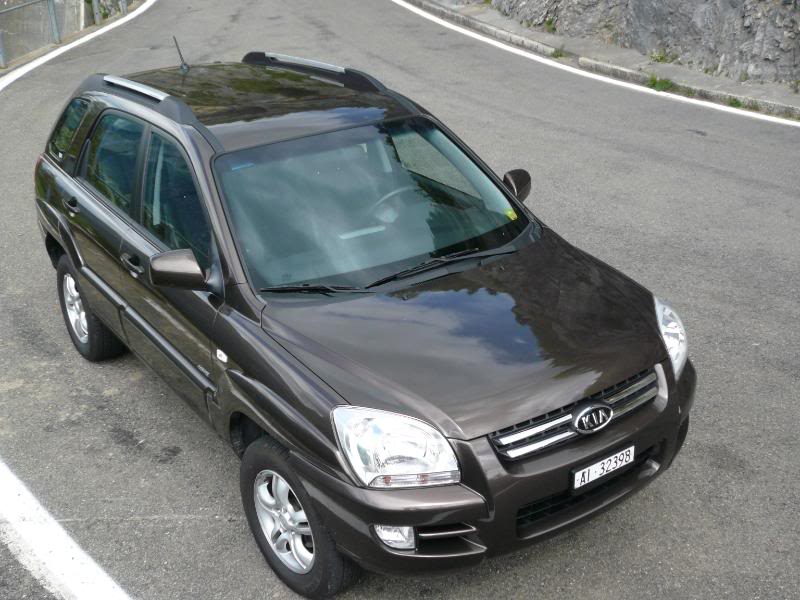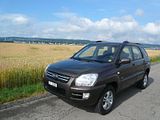

Another weekend, and so time for another visit to the Swiss mountains, and the opportunity to test another car from Mr Hertz’ Swiss fleet. The first offer, which was looking pretty much like the choice of the proverbial Mr Hobson was a Mercedes B170 (graciously, I was going to be allowed to choose between black or silver), but my persistence eventually resulted in the counter rep (the same one who inflicted the Croma Diesel Automatic on me) deciding that in fact he could offer me a brown car instead. A Kia Sportage 2.0 CRDi, in a rather unusual shade of metallic brown, no less. At this point, I expect lots of people to shudder, or even to stop reading, as it seems that there is still a lot of prejudice about Kia products out there. I have to confess that the current Sportage is one of those sort of “guilty pleasure” type of cars, whose appearance I quite like, so I was particularly keen to see whether the driving experience could live up to my hopes. I also wanted to make a comparison with the Ford Maverick that I recently tried, and with which I was rather disappointed.
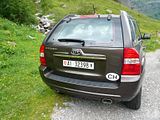
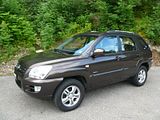
Although I would venture to suggest that the Sportage’s largest market is probably the US, the car certainly comes across as one designed for the more compact roads of Europe, and the car feels that bit more “manageable” in every direction, as it is a little shorter, narrower and less tall than the Maverick. Certainly, it is much easier to get in to, with far less of a step up, even though you do retain the SUV feeling of sitting that bit higher than people driving “ordinary” cars, and hence you have what is so often called a “commanding driving position”. Despite the slightly smaller dimensions, there’s plenty of space in it for 5 people, and there’s a decent sized boot. Access to the latter can be either by lifting just the rear window, or if you use the left hand of the two releases, lifting the entire tailgate, which being smaller than the Maverick’s is also lighter and more manageable both to open, and, more importantly, to close.There was no luggage cover supplied for the boot space – something that you often find with US SUVs, but which would disturb me were I to want to leave valuables in the car. There was a rather shallow area under the main boot floor, but this would not be deep enough for anything like a LapTop, though. A couple of useful side cubbies would help for those odds and ends that always accumulate. The rear seats, split 1/3: 2/3 fold down to increase the available load area from sizeable to vast, though as the rear seat cushion does not lift, there is no barrier from the seat backs for protection. Inside the passenger cabin, there are plenty of storage areas, with a large, deep and very useful area in front of the gear lever and cup holders, big door pockets, a decent sized global box and a cubby behind the handbrake.


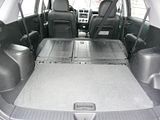
The first impression on getting into the driver’s seat is that the steering wheel is still “old school” Kia, as the rim is rather mean and narrow, compared to the sort of wheel that you would find in a Carens or a Cee’d. The lower part – the bit you rarely hold – seemed thicker, but, with its standard leather covering, I actually found no real issue when driving around. Next impression is that the plastics used on the dash and door casings are also rather hard, and not the sort of soft-touch material that you might find in some of the European rivals, such as the Tiguan or the Q5. However, the quality appeared decent, with good fit, and actually, I decided that perhaps they were more appropriate for what could be a more utilitarian vehicle than a regular hatchback. Certainly, after 20,000 kms, there were no marks or scuffs on the inside, which is more than can be said for any Toyota I have encountered, which seem to suffer particularly in this respect. Sitting in front of me was a clear dash, with dials that were easy to read, and very logical, and there was a very straight forward stereo and air con system, unlike some of the unfathomable stuff you find these days. The clock needed resetting, and unlike my attempts in the Bravo, this was totally intuitive, and changed in seconds.
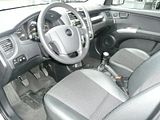
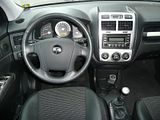
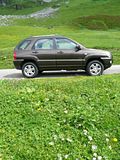
I could not get quite the perfect driving position, as really, I would like to move the steering wheel closer to the dash, to cope with the different relative proportions of my arms and legs, but it was not bad, and the part leather seats proved comfortable on a day when the weather forced me to spend more time in the car and less out of it than I would have liked. Adjusting the mirrors, it was clear that I had an excellent view in all directions, with good visibility to the side, to behind and over the shoulders. No silly blind spots from turned up side windows or excessive blacked-out window glass. Despite the fact that the test car was a diesel, it could be fired up immediately, at which point it reminded me aurally that it is indeed a diesel.

This is the 136bhp common rail diesel engine that has been around for a few years, and which the press have noted is somewhat inferior to the more modern 1.6 diesel that also features in the latest Kia products. Noisy at idle, and at low speeds, for sure, but actually, as speed increases, the diesel sounds disappeared, and the car is quiet and refined at autobahn cruising speeds, especially when using the standard 6th gear, at which point the engine is turning over at very low revs indeed. Apart from the unwelcome noise, it’s actually quite an effective engine. The engine seemed powerful enough for the job in hand, and rarely caught me out, even on alpine roads. Of course it needed a fair amount of gear changing on such terrain, but taking full advantage of all the gears, this proved little hardship. The gearchange itself was a bit mixed. The lever is quite spindly, again reminiscent of old style Kia’s but the change was mostly very positive. Occasionally, it seemed reluctant to engage first, and there were a couple of times when I got fourth and not sixth. It seemed that unless your foot was well down on the clutch pedal, the change could be a little reluctant, but otherwise it was fine.
No-one buys an SUV like this if they are looking for the ultimate in handling prowess, or even for a car that is really fun to drive, so my expectations were not that high. I can record that no issues emerged in my day with the Sportage. The car always felt controlled, with just a trace of understeer, but nothing alarming. The steering was well weighted and had decent feel so I had a good idea what the steered wheels were actually doing on the ground. During the test, I experienced some truly torrential downpours, and the Sportage felt safe in these, as well. The brakes were just as good in the wet as they were in the dry, and far better than those that Ford deem appropriate for their SUVs (the Explorer was far worse than the Maverick in this regard). I was also pleased to find that the ride was quite good, on the variety of Swiss road surfaces on which the test was conducted.
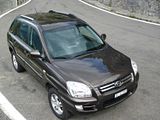
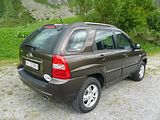
Poor weather limited the scope of the test, and massively reduced the number of photos that I took. However, I’d be happy to have the Sportage back for another go. I’d be even happier if I could try one with the 2.7 V6 petrol engine, as I suspect that for those who can afford the extra fuel costs would benefit from greater refinement of this power plant. Fit a new interior to Kia’s latest standards, and I think this would become a rather appealing SUV. I suspect that more than a few people will disagree with me………… it is a Kia, after all! Needless to say, the Sportage is a much more agreeable proposition than a Maverick. I note that Avis has just taken some Kugas on to their fleet. I need to try one of those.














